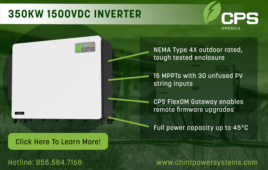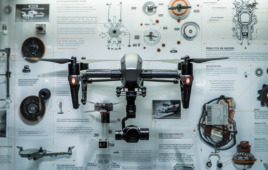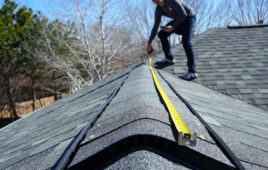
The new Kipp & Zonen SMP12 is a fast response Class A pyranometer that features an integrated heater with zero moving parts. Thanks to its solid-state heating technology, maintenance is minimized.
Technical specifications provide valuable insights into a measuring instrument, but it’s true capabilities come to light through real-world performance. The presence of dew, frost, or debris on the optical dome of a radiometer can greatly influence its readings, often resulting in inaccurate data. Fortunately, these challenges can be effectively addressed by implementing ventilation and heating techniques.
By Martin Maly, Sr. Content Marketing Specialist at OTT HydroMet
Radiometers measure the intensity of solar radiation. For every part of the solar spectrum, from the ultraviolet to long-wave infrared, there are sensors to detect specific ranges of incoming radiation. Instruments to measure only the solar spectrum relevant for photovoltaics are called pyranometers. Many of these radiometers, although built for different applications, share a similar construction principle; photons enter the housing of a sensor through an optical dome and heat up a detector known as a thermopile. This is basically a semiconductor that converts thermal energy into electrical energy and thus induces an electrical signal. Of course, there is more to radiation monitoring than summarized in these first paragraphs; analogue versus smart output, quality of components, sensitivity, robustness, and much more. But the basics are enough to understand a serious issue for solar radiation monitoring.
Only clean domes give accurate readings
To get the most out of a radiometer, pyranometer, pyrgeometer, and UV sensor, the optical dome needs to be clean and dry. Water droplets on the dome can scatter incoming photons, while snow or dust blocks light on its way to the detector. This distorts or even confounds the measurement, no matter how well the sensor would perform in the lab. Cleaning the quartz and glass domes by hand would be an effortful and costly option, in most cases uneconomic. To ensure a constant measuring quality in the field, Kipp & Zonen, a product brand of OTT HydroMet, had started early to develop systems that ventilate and heat their measuring instruments. Since 1992, Kipp & Zonen has had a track record of multiple generations of ventilation units.
Unique airflow keeps the whole dome clean
The pinnacle of this development is the Kipp & Zonen CVF4 ventilation unit. It creates a steady airflow that keeps the quartz or glass dome clean from dust, dew, rain, and snow. The integrated heater can be powered to prevent dew formation, disperse precipitation, and melt frost, ice, or snow on the dome. Using ventilation and heating maximizes the up-time of high-quality data and extends the cleaning interval. The CVF4 can be easily mounted on all pyrgeometers, ultraviolet radiometers and CMP and SMP pyranometers by Kipp & Zonen. The airflow it creates is unique; it swirls to improve the distribution over the top of the dome whereas many conventional ventilation solutions only blow upwards, leaving the spot on the very top of the dome untouched.
Proven under harsh conditions
CVF4 ventilation units are used globally, especially for stations within the Baseline Surface Radiation Network (BSRN), colder regions with a lot of dew or precipitation, and areas with a lot of dust. For example, the Finnish Meteorological Institute (FMI) has relied on Kipp & Zonen instruments for many years, including the CVF4 and its predecessor models. ‘The Kipp & Zonen ventilators have proved to be reliable and weather-resistant and are adequate to keep frost and snow away,’ says Olli Mantikka, solar technician at the FMI. ‘All in all, I am very pleased with the long-term performance of the units.’ The experience includes a joint case study conducted by the FMI and Kipp & Zonen, to evaluate the effects of different types of ventilation units on keeping pyranometers clean, especially in the winter conditions of snow and rain showers, freezing rain, frost, and other situations. Three Class A pyranometers were each fitted with a different ventilation unit, Kipp & Zonen CVF3 and CVF4 models, and a custom-made design; all of which were continuously heated. A fourth pyranometer was not ventilated and served as a control for the comparison. Technology that melts snow and evaporates dew on the glass dome.

Figure 1: Kipp & Zonen ventilation units can be easily mounted on pyranometers, pyrgeometers, and UV radiometers. This image shows a Kipp & Zonen SOLYS2 sun tracker being installed at the Polish Meteorological and Hydrological Office in Warsaw.
SMP12: Kipp & Zonen’s most innovative pyranometer yet
The new Kipp & Zonen SMP12 is a fast response spectrally flat Class A pyranometer that combines solid-state dome heating, with no moving parts, and best-in-class surge protection to maximize accuracy and minimize maintenance. It combines the proven sensor and diffuser technology from the Kipp & Zonen RaZON+ PH1 and PR1 radiometers with an enhanced version of the Smart interface and the low maintenance of the SMP10. Additional features, based on customer feedback, are internal sensors for the monitoring of the tilt angle and humidity. For Joop Mes, Senior Scientist at OTT HydroMet, the SMP12 is the most innovative pyranometer from Kipp & Zonen, which is one of OTT HydroMet’s brands. ‘Our newest development, the SMP12, fulfills all the requirements stated in the international standard for solar irradiance monitoring, ISO 9060:2018,’ says Mes. All the ventilation units performed well in keeping the domes clean and preventing the main effects of bad weather on the radiation measurements. There was an example in February of frozen sleet, when all ventilation units successfully evaporated the accumulated sleet on the domes. In this case, the unventilated pyranometer was reading high by up to 38% before it was cleaned, as the frozen sleet on top of the dome acted like a reflector, as shown in the graph.
Ventilation or heating – it depends on the application
In the end, only clean domes give reliable readings. The choice between external ventilation units and pyranometers with integrated heating depends on the actual application and region. Users who are unsure which solution would suit their case better, can approach the OTT HydroMet team and discuss their plans with experienced professionals.
Talk to Experts
Figure 2: The CVF4 ventilation unit creates a unique swirl that cleans the whole dome up to the top.
Sponsored Content by OTT Hydromet





Tell Us What You Think!